How To Create Brand Guidelines Indesign
How To Create a Style Guide From Scratch in 5 Easy Steps
![]()
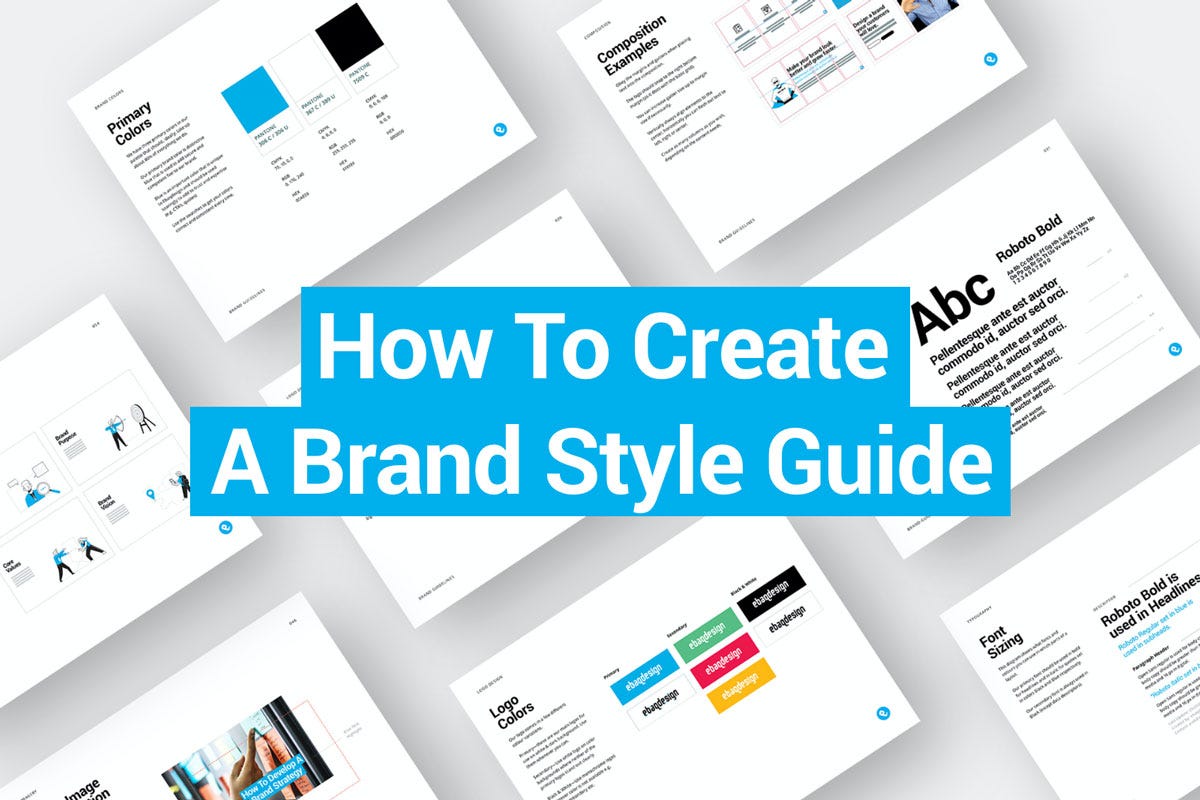
Looking to create a style guide? — Check out my 5-step process to creating a complete style guide from scratch.
Even if you have a great logo and identity, it's NOT enough to just rely simply on a logo package.
Go beyond just logo files and create a professional style guide.
Even with a good-looking logo and identity, it is still a big challenge to maintain consistency in how the brand looks.
Especially when you have to create a lot of branded content or work with many designers.
If your brand doesn't present a strong unified message across the board, it can be very detrimental to your integrity as a business.
So how to you ensure your brand always looks good? — Build a brand style guide and use it in everything you do.
The Importance of Brand Standards
Before we dive into the process, let's first understand the value of having a solid guidelines in place.
To illustrate that, I took as an example my recent client — Medihuanna.
Below you can see designs that were created with and without the style guide (by other designers) — can you spot the difference?
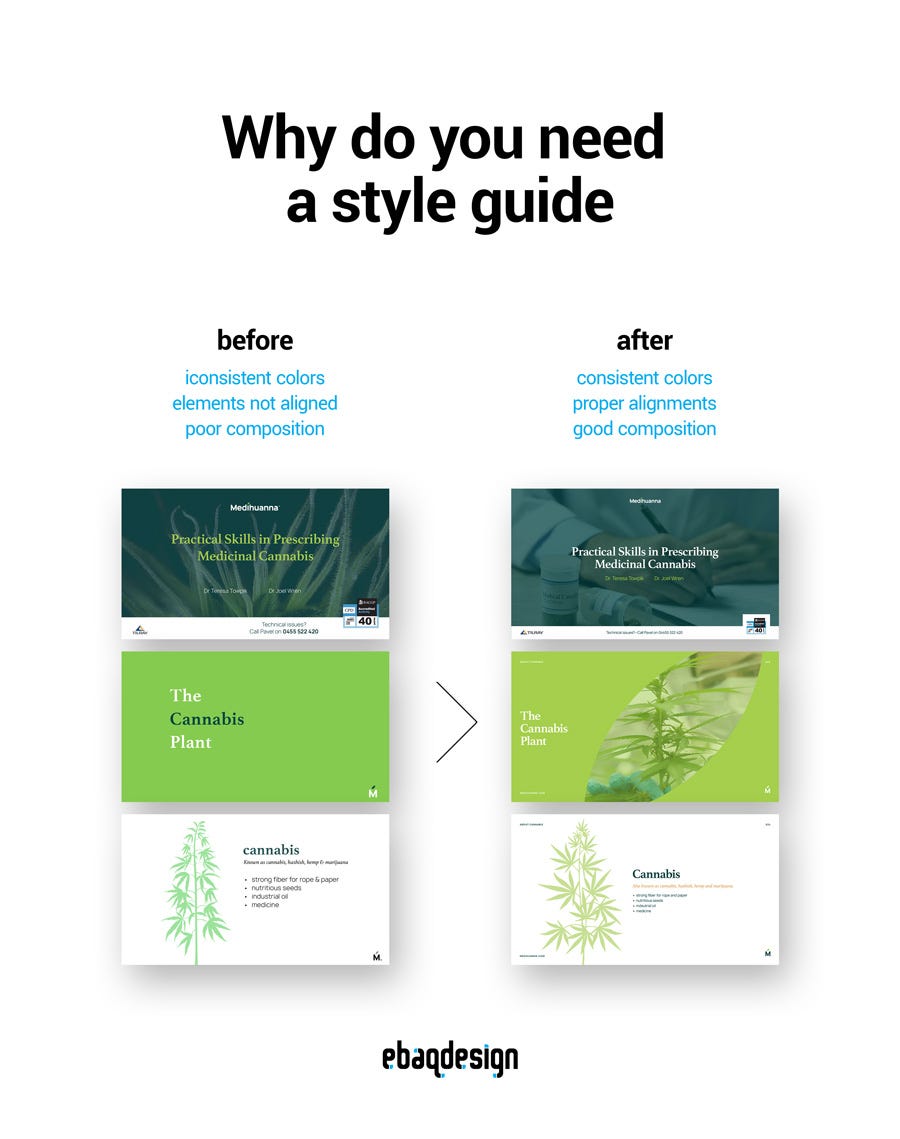
Without a solid style guide you can easily end up with misplaced logos, inconsistent colors, mashup layouts and generally off-brand look.
The biggest benefit of creating a style guide is not only ensuring consistency, but it is also a huge time saver.
When you have a solid brand standards in place, then it's much easier and faster to design something that is "on brand".
With that being said, let's dive into my 5-step process to create a brand style guide.
1. Choose your medium
First, before you start putting together your style guide, you need to decide on what medium to use.
Depending on your needs, you can create a PDF document or a dedicated website.
More and more brands choose to go digital and create dedicated brand portals that host their guidelines.
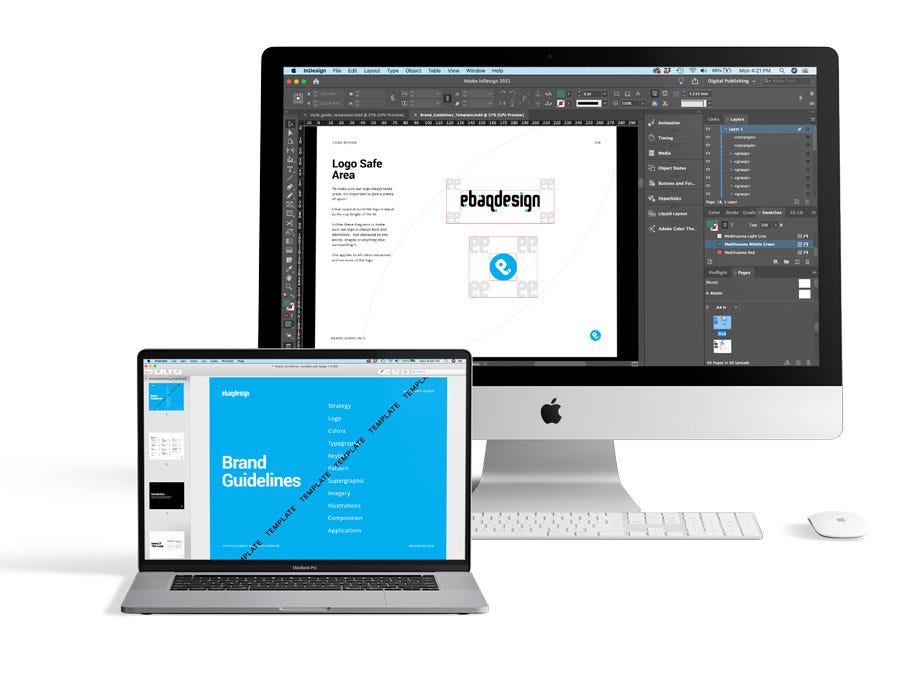
While a digital style guide will certainly make it more accessible to everyone working with, for or on your brand — it's not a requirement.
You can opt for an old-school PDF that can be printed, or even better — an interactive PDF that can also be viewed online in the browser.
Personally, I like to create style guides in InDesign and then publish them online, so that anyone can access them easily.
Adobe InDesign allows you to publish your documents with a click of a button (You need Adobe CC).
Alternatively, you can simply host your PDFs in the cloud, just like on Dropbox for example.
The medium of your choice will also dictate the document size and page orientation.
I like to create my guidelines in landscape letterhead format, so that way I kill two birds at once — they can be printed using a regular printer, and they look good on screen as well.
However, if you decide that you won't need to print your style guide at all, then you can even go for a format like for example 1920 by 1080.
2. Make an outline
Once you made up your mind about the medium and format you're going to use, then it's time to make an outline — table of contents.
Every style guide should include at least: the logo do's and don'ts, fonts, colors and examples of use.
However, while style guides are often thought of as visual-only, you should also include elements of your brand strategy in order to help people understand the brand they working on.
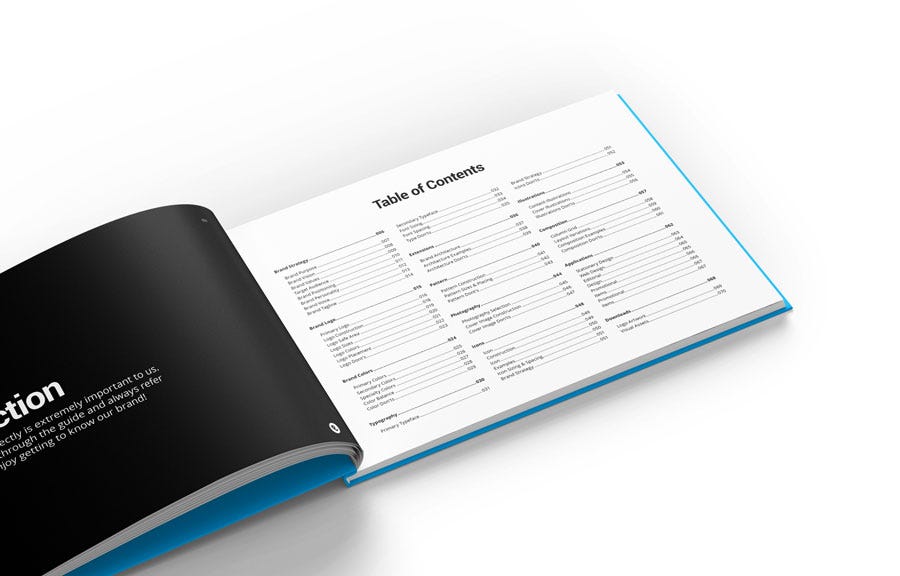
What components should a brand style guide include?
Every company has different needs and budget, but a solid style guide should definitely include the following components:
- Strategy — A high-level overview of the brand strategy that contains elements like: brand purpose, vision, values, positioning, personality and tone of voice.
- Logo — Here goes all the logo lockups, color versions, minimum sizes, logo placement, logo do's and don't's etc.
- Colors — Specify on primary and secondary color palette (color spaces), color balance graph, do's & dont's etc.
- Typography — Specify on primary and secondary typefaces, fonts sizing and spacing, examples of use, do's and don'ts etc.
- Imagery — Describe the photography style, include examples of illustrations, iconography or other graphic elements.
- Applications — Show mockups of how these brand assets can come together to create a desired look & feel.
- Downloads — Include links to download the logo package and other brands assets.
Again, this is not a complete breakdown of the sections you might want to include in your style guide — just the most common ones.
You could also include things like: composition, animation, UI components, editorial tips and other elements.
In order to define the scope of work properly, you need to examine all of the brand's touch-points and based on that you can determine what elements will be required.
First, make a list of the applications that your brand may need designs for (website, presentation, stationery etc.)
Then try to design for key applications to figure out what elements your style guide should cover.
3. Flesh out the content
With the overall structure of your style guide created, then you go into each section and start laying out the content.
When fleshing out the content, it's important to:
Focus on making your style guide extremely practical and understandable at a glance.
Make your guidelines easy to apply — include descriptions, annotations, tips, do's and don'ts, etc.
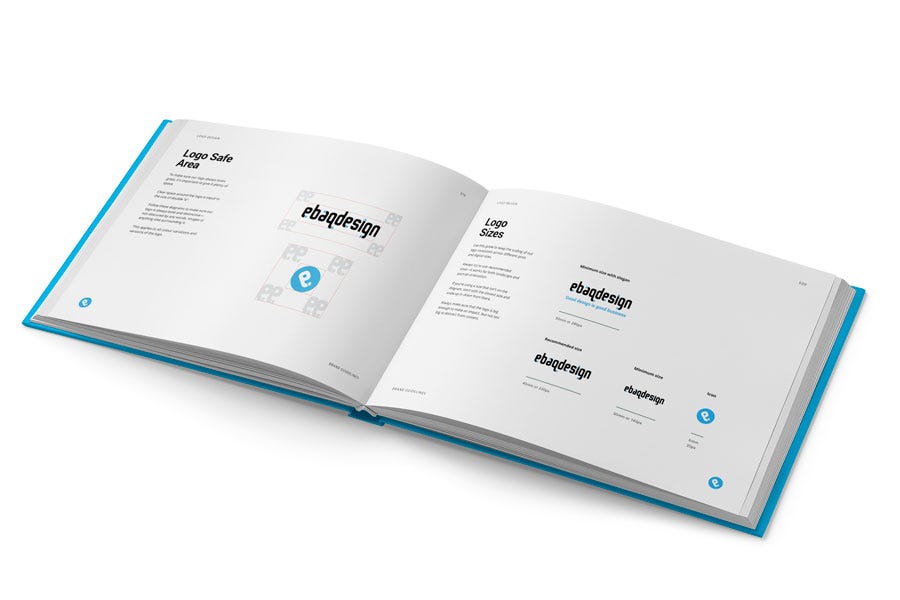
I find it really helpful to include at least these three pages in most of the sections:
- Construction — Specifications on how to use that particular asset (logo safe area, grid setup etc.)
- Example of use — A simple showcase of how that particular asset can be used in real applications.
- Common mistakes (don'ts) — It's helpful to identify the key mistakes to avoid (logo don'ts, typography dont's etc.)
Keep in mind that each section might require more or less pages — depending on what you describe.
Remember to give enough explanation for each element, but also try to be as concise as possible.
Nobody want's to read hundreds of pages of text — especially not creatives, so keep it short and on point.
A good practice is to check out some of the best style guides to get inspired.
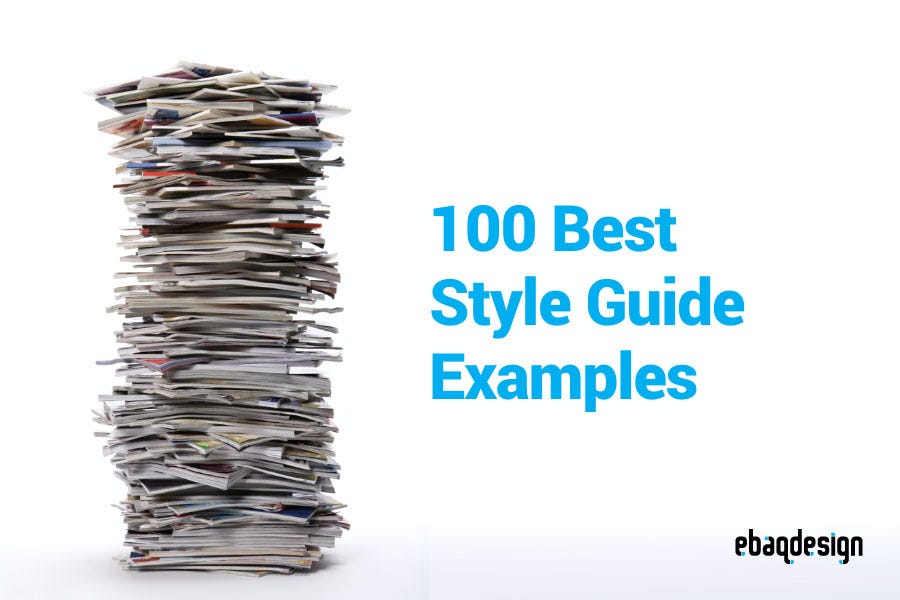
Also see my other blog post where I feature some of the best brand guidelines available online, to get some inspiration.
Ultimately, design is an iterative process where you go back and forth to test things out.
Next, based on what performs best, you can distill some rules and guidelines for others to follow in order to recreate that kind of a look.
In other words — You must first design something first, in order to be able to establish rules on how things should be designed.
Whatever you do, keep in mind that your goal is to develop a practical guide that empowers creatives with the tools they need to create things that are "on brand".
How To Create Brand Guidelines Indesign
Source: https://medium.com/ebaqdesign/how-to-create-a-style-guide-from-scratch-in-5-easy-steps-64c3c8ad303a
Posted by: lopezdresse.blogspot.com

0 Response to "How To Create Brand Guidelines Indesign"
Post a Comment